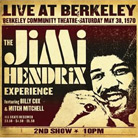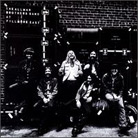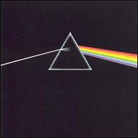![[SoundStage!]](../sslogo3.gif) The Vinyl Word The Vinyl WordBack Issue Article |
March 2004 Found On Vinyl: Jimi Hendrix, the Allman Brothers Band, and Pink Floyd Jimi Hendrix was not quite 28 when he died due to complications from overdosing on an unfamiliar sleeping pill while on tour in England. It seemed as though he had just appeared, changing all of our preconceptions as to what was possible with an electric guitar, and then suddenly he was gone. His recorded, and officially released, output was considerable, given how short a time he was with us. But it seems there is a wealth of material that has lain fallow since his death. (Hendrix, it appears, was prolific in the studio.) Due to prolonged legal wrangling that has only recently been settled, we’ve not heard much of this material until recently (what was released was done in a haphazard manner simply to turn a buck). Now the Hendrix family, with the help of MCA, has finally begun to compile and release new collections of Jimi Hendrix’s music in a manner more closely aligned with the direction he may have taken had he lived.
Man, what a night. Hendrix, Cox and Mitchell were definitely on. Hendrix had been performing and recording for over three years when this concert was recorded, and he had already traveled down quite a few diverse paths -- from psychedelic rocker to blues/rock musician to jazz-influenced guitarist. It’s been said that it was his work in this latter regard that helped push Miles Davis fully into his fusion period. But here, on this night, he distilled all these diverse essences and created something absolutely beautiful that will thrill you just as much as it did the audience almost 34 years ago. If you want just one reason to purchase this double-LP set, begin right with the opening track, "Pass It On (Straight Ahead)." Jimi’s guitar just blazes forth, firing out beams faster than a laser gun. And what music! If you close your eyes and mentally picture Hendrix's guitar as a saxophone, you could almost make a case for Hendrix being the John Coltrane of the electric guitar, so well does he improvise and so inspired is his playing. Cox and Mitchell are right there with him, pushing, prodding, and joining him in chorus after rocking chorus. When I first heard this cut, I wondered how long Hendrix could sustain such a high level of play. My answer came as I lifted the needle from the take-out groove of side four. The packaging of this set is first-rate. MCA, together with the Hendrix estate, has not just slapped together something haphazardly, figuring on capitalizing on Jimi’s name. Instead they have lavished loving attention to both the cover as well as the booklet included, which offers some interesting insights into this concert. The 180-gram pressings are fully as flat and quiet as anything coming out of the audiophile-reissue houses today, with the plastic-lined paper sleeves in particular being a nice touch for a major-label release.
Due to the popularity of this album, finding original copies of it isn’t all that difficult. But finding a clean, affordable, original pink-label issue is a bit more of a challenge, even with eBay. Most of the copies I’ve seen (or seen ads for) are neither original nor particularly clean (I’ve found that other peoples' opinions of clean and mine are radically different). Remember, this album was very popular with the college set when it initially appeared, so chances are that most original pressings saw quite a bit of time on cheap, mass-market 'tables with the obligatory cheap, worn cartridges, and probably weren’t handled with any particular degree of care. Therefore, any copies that are clean and original will be priced accordingly -- high. That ends up placing them within or above the same price range as this Classic reissue, which in turn begs the question: Why spend time and effort tracking down an original if buying a well-transferred reissue such as this one is only a few clicks (or a phone call) away? Which brings up a second point that needs pondering: Just how good a transfer is the Classic Records Live at the Fillmore East anyway? No original I’ve seen was pressed on vinyl the quality of that used by Classic Records for their new Quiex SV-P 200-gram LPs (which, as far as I’m concerned, rivals JVC’s famous formula from vinyl’s heyday). Consequently, no original pressing was ever this quiet. The first two sides are filled with examples of just how deeply the blues infested the thinking and playing of the band, but the third and fourth sides make this album an indispensable part of any music-lovers library. The group-written song "Hot ‘Lanta" is a fine lead in for what’s to come. The band nails it, and the audience digs it. But it’s the 12+-minute Dicky Betts penned "In Memory of Elizabeth Reed" and the 22+-minute Gregg Allman song (and concert staple) "Whipping Post" that really demonstrate just how good the Allman Brothers could be live. Twin drummers Butch Trucks (whose nephew Derek now plays guitar in the band) and Jai Johanny Johnson along with bassist the late Berry Oakley set the foundation for the band. And the Classic Records pressing lets you both hear as well as feel each of them. But the real fun of this album is listening to Duane Allman and Dicky Betts trade guitar leads.
Compared to the domestically pressed Capitol issue, this new pressing is almost a completely new album. If you have only owned the Capitol LP (as I have), find a way to order this reissue right now -- it’s that good. All the murkiness that infested the Capitol LP is completely done away with. Every minute detail, both musical and otherwise, that Pink Floyd included on the master tapes is laid bare. My copy was clean, flat, and quiet, with no ticks, pops, or other pressing nasties, allowing me to float along in the atmospheric sense of space and time that is Dark Side of the Moon. I own the new SACD and have listened to it quite a bit in both stereo and multichannel. It’s good -- very, very good (so good, in fact, that it's worth owning for the multichannel mix alone). But nothing holds a candle to the sound of this well-mastered and -pressed vinyl copy of Dark Side of the Moon. The reissue comes complete with all the stickers, posters, and cards that were included with the original (yes, even the Capitol LP had them, once). EMI went all out, and they are to be commended for doing so. These three albums by classic-rock acts are pressed better on higher-quality vinyl than any originals of their era, but more than that, they are musically important as well as sonically terrific. They’ve been done as well as humanly possible -- CD and SACD be damned! ...John Crossett
|
|
![[SoundStage!]](../sslogo3.gif) All Contents All ContentsCopyright © 2004 SoundStage! All Rights Reserved |
 One
of the latest, the May 30, 1970 concert at the Berkeley Community Theatre (The Jimi
Hendrix Experience - Live At Berkeley [MCA B0001150-01]), has been issued --
this is new material -- as a 180-gram two-LP set that contains the entire second set from
that concert sequenced just as Hendrix, in company with bassist Billy Cox and drummer
Mitch Mitchell, played it that Sunday night.
One
of the latest, the May 30, 1970 concert at the Berkeley Community Theatre (The Jimi
Hendrix Experience - Live At Berkeley [MCA B0001150-01]), has been issued --
this is new material -- as a 180-gram two-LP set that contains the entire second set from
that concert sequenced just as Hendrix, in company with bassist Billy Cox and drummer
Mitch Mitchell, played it that Sunday night. Next up is an
album that I consider to be the best live recording of blues-influenced rock ever
made: the Allman Brothers Band Live at the Fillmore East [Classic Records
SD-2-802]. This double-LP features another great guitarist, slide master Duane Allman (who
also died tragically young), captured live, and so makes a perfect follow-up to Live at
Berkeley. Live at the Fillmore East documents the Allman Brothers at their
absolute pinnacle, and the combination of great songs, out-of-this-world performances, and
better-than-expected sound, especially for a live rock recording from 1971, make for a
U-R-there experience.
Next up is an
album that I consider to be the best live recording of blues-influenced rock ever
made: the Allman Brothers Band Live at the Fillmore East [Classic Records
SD-2-802]. This double-LP features another great guitarist, slide master Duane Allman (who
also died tragically young), captured live, and so makes a perfect follow-up to Live at
Berkeley. Live at the Fillmore East documents the Allman Brothers at their
absolute pinnacle, and the combination of great songs, out-of-this-world performances, and
better-than-expected sound, especially for a live rock recording from 1971, make for a
U-R-there experience. Finally, we come
to an album that spent more time on the Billboard Top 100 chart than any other rock album
-- a staggering 741 weeks -- and is the best-selling rock album of all time, Pink
Floyd’s Dark Side of the Moon [Capitol/EMI 82136]. If ever an album deserved
the title "classic," this is it. D.S.O.T.M. was the soundtrack for an
entire generation and became the foundation for a whole subdivision of rock. It also
spawned the stadium-concert era. So popular is this album that even today, 30+ years after
its initial release, its availability on SACD became the event of the fledgling
high-resolution era. Fortunately vinyl enthusiasts were not forgotten. EMI also pressed a
brand-new 180-gram LP to mark D.S.O.T.M.'s 30th anniversary, and pressed it from
the original analog master tapes using the talents of mastering maven Doug Sax and
pressing guru Michael Grey to ensure a quality product.
Finally, we come
to an album that spent more time on the Billboard Top 100 chart than any other rock album
-- a staggering 741 weeks -- and is the best-selling rock album of all time, Pink
Floyd’s Dark Side of the Moon [Capitol/EMI 82136]. If ever an album deserved
the title "classic," this is it. D.S.O.T.M. was the soundtrack for an
entire generation and became the foundation for a whole subdivision of rock. It also
spawned the stadium-concert era. So popular is this album that even today, 30+ years after
its initial release, its availability on SACD became the event of the fledgling
high-resolution era. Fortunately vinyl enthusiasts were not forgotten. EMI also pressed a
brand-new 180-gram LP to mark D.S.O.T.M.'s 30th anniversary, and pressed it from
the original analog master tapes using the talents of mastering maven Doug Sax and
pressing guru Michael Grey to ensure a quality product.